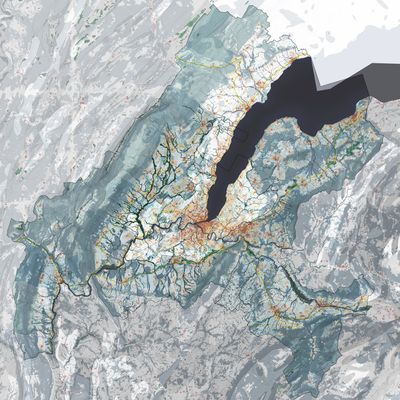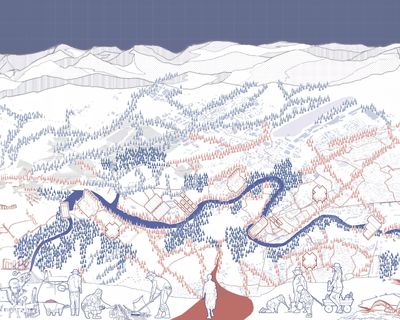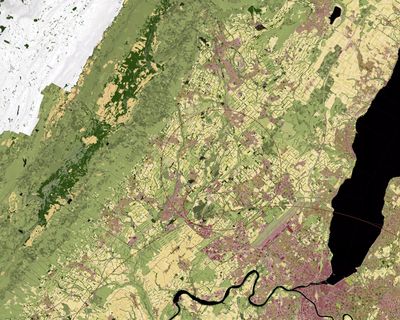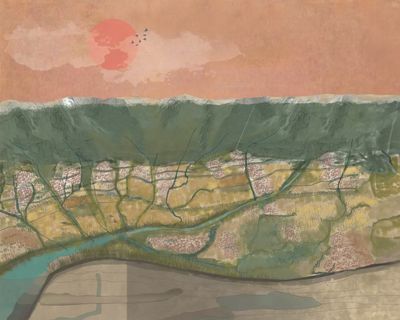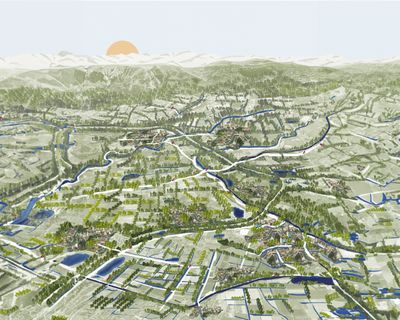Transition StudioGreat Geneva & the Hors-Zone-à-Bâtir
The territorial authorities of Great Geneva commissioned the Hors-Zone-à-Bâtir research to examine the unbuilt cross-border peri-urban space through specific planning to understand its multifunctionality and forecast long-term ecosystem services, as part of a complete overhaul of their land use planning instruments. The research aims to thoroughly re-examine current planning and concepts. The following work, partly associated with this research, intends to contribute to the construction of a renewed cross-border territorial vision.
The large transboundary metropolis of the Alpine-Leman City-Territory today experiences rapid demographic growth, which exerts unprecedented pressure on its ecosystems, contributes to a new form of inhabitability, and influences the future. The multiple ecosystem services that specific territorial structures provide are considered here as levers for the ecological and socio-economic Transition project. Their representation, expressed in sections, in particular, contributes to the construction of new spatialized readings.
A new infrastructure for continuity
Given the territory’s “weak structure” a paradigm for territorial development could be conceived, placing the unbuilt space at the center. In this case, the weak structure is considered as a space for extended experimentation on ecosystem services beyond the anthropocentric approach to ensure adaptation to climate change. The rural space – in its acceptance as a non-constructible area – could remain the neglected part of the territory planning and yet, from the perspective of an ecological transition, the organization of the unbuilt territory appears to be an issue of the first order, since it contributes to providing the region’s inhabitants with a significant number of ecosystem services indispensable to them.
Representative watersheds
The watershed scale is considered as the starting point of the reflection, considering water and the hydraulic system as particularly structuring of the Geneva basin. Two of the five projects explore the continuity of ecosystem services in the Aire watershed. Two others focus on the one of the Allondon. The last proposal is located along the Rhône, just between the two other hydraulic areas. The five projects below complement each other, bringing out both a general and localized understanding of the possible places and dynamics for imaginative change.
